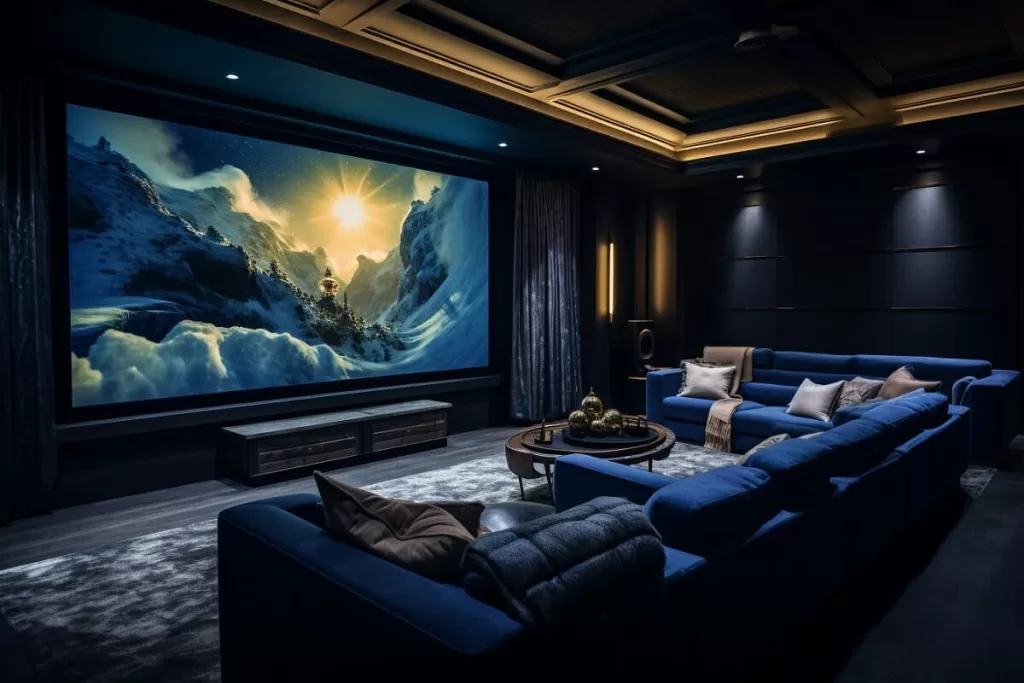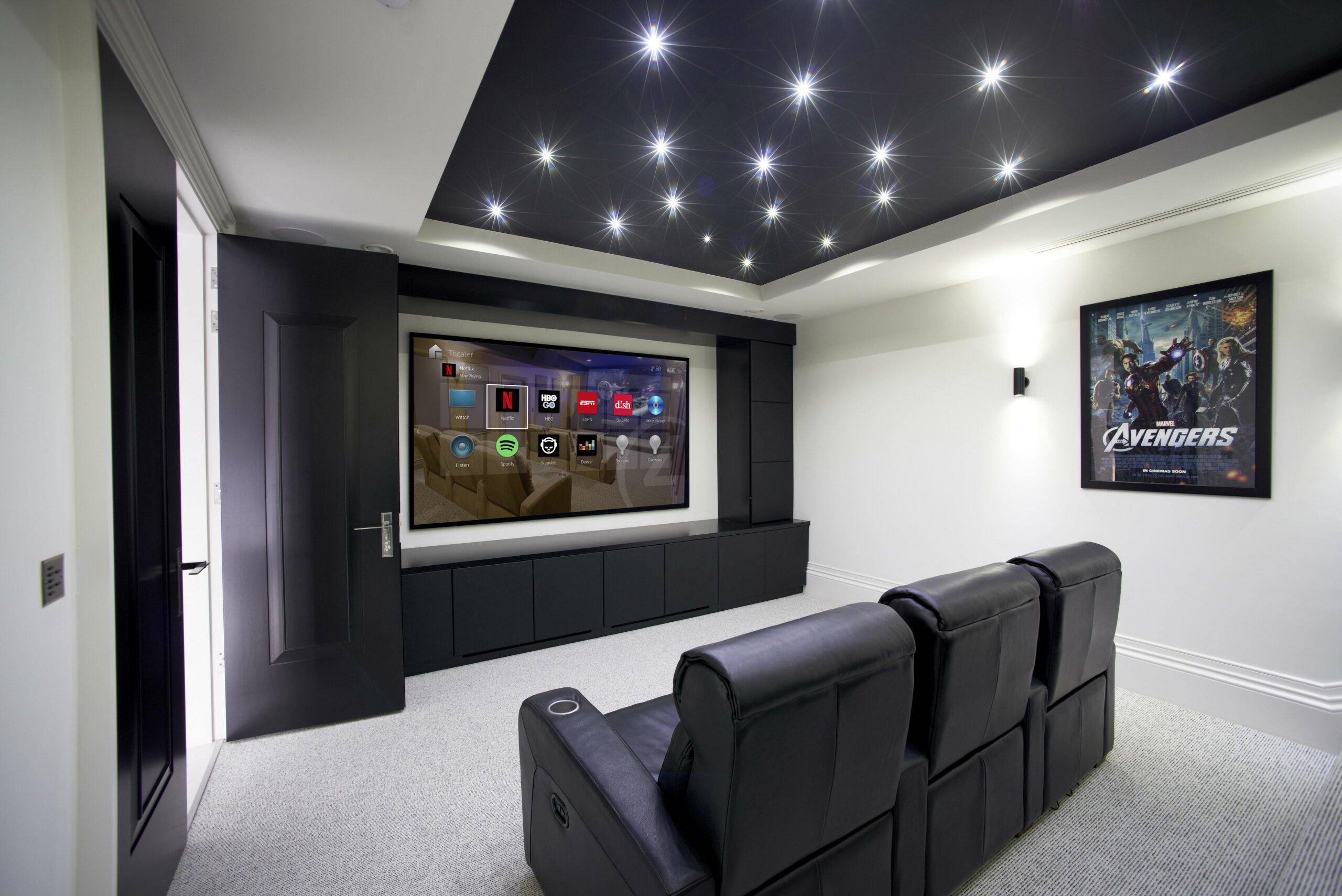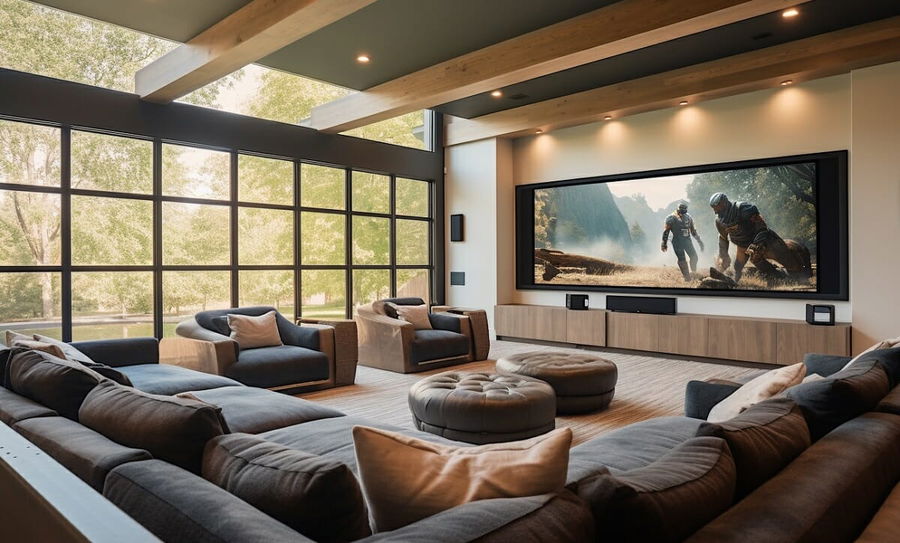Expert Home Theater Tampa Solutions for Any Budget
Expert Home Theater Tampa Solutions for Any Budget
Blog Article
Home Theater 101: Whatever You Required to Know for a Motion Picture Experience in your home
Producing a home movie theater that equals the motion picture experience of a business theater entails careful consideration of multiple components, consisting of screen selection, sound systems, and space design. Whether you are considering the excellent display size or the complexities of surround noise, understanding these basics is essential.
Choosing the Right Screen
When establishing up a home movie theater, selecting the appropriate screen can make or damage the checking out experience - home theater design tampa. The display functions as the focal point of your setup, influencing photo top quality, watching angles, and general aesthetic. Secret elements to consider consist of display size, resolution, and type
First, determine the appropriate display dimension based on your area dimensions and seating distance. A general standard is to sit roughly 1.5 to 2.5 times the diagonal screen dimension for ideal viewing. Next off, pick between different screen kinds, such as fixed-frame, mechanized, or retractable displays, each offering unique advantages. Fixed-frame screens typically provide the best photo top quality, while motorized options enable for flexibility in area usage.
Resolution is another crucial aspect. For a genuinely immersive experience, consider a screen created for 4K or perhaps 8K material, ensuring sharpness and clearness. In addition, consider the screen's gain, which impacts illumination and comparison; a greater gain can enhance brightness in well-lit spaces, while a lower gain might be preferable for darker environments.
Picking Audio Equipment
Audio devices is a critical part of any home movie theater system, dramatically boosting the overall watching experience. The selection of audio gear can determine the depth, clarity, and immersion of sound, important for producing a cinematic atmosphere.
When selecting audio equipment, consider a border stereo, which typically includes a receiver, numerous audio speakers, and a subwoofer. A 5.1 or 7.1 channel system is recommended, where the first number represents the speakers and the second the speaker, offering an immersive soundscape. The receiver is the heart of the system, managing audio and video signals, and need to sustain modern-day layouts like Dolby Atmos for an improved spatial experience.
Quality speakers are necessary; try to find designs that supply a well balanced noise profile with good bass action. Floor-standing speakers can produce richer sound, while shelf alternatives save room. In addition, think about wireless alternatives for convenience of setup, although wired systems usually provide exceptional performance.

Ideal Seating Plans
Producing an optimal home cinema experience pivots dramatically on optimum seating setups. The arrangement of seats plays a critical role in both convenience and checking out quality, straight affecting the general cinematic experience.
First, consider the display dimension and viewing distance. An usual guideline is to place seats at a range approximately 1.5 to 2.5 times the diagonal dimension of the screen. This makes sure an immersive experience without stressing the eyes.
Following, elevation is essential. The back rows must be higher than the front to prevent obstructions if your seats is in a tiered format. For level seats, make sure that the front row is not as well close to the display, which every person has a clear view.
Moreover, take into consideration the setup in terms of social characteristics. Team seating can improve the common experience, while individual seats might be chosen for individual watching.

Lastly, focus on convenience with ergonomic seating that supports prolonged watching periods. Including recliner chairs or cushioned seats can significantly enhance the experience, making the home cinema a preferred location for both home entertainment and relaxation.
Lighting and Setting
Efficient lighting and setting are vital parts of a well-designed home movie theater, as they dramatically affect the viewing experience. The ideal lights can improve the motion picture feel, while bad selections can interfere with it. For ideal outcomes, consider a layered illumination approach that includes ambient, task, and accent lights.
Ambient lighting provides general lighting, making certain that the space is not totally dark, which can stress the eyes. Dimmer buttons are very recommended, enabling for changes based upon the web content being viewed. Task lights, such as wall sconces or floor lights, supplies useful illumination for tasks like reading or navigating the space without interrupting the general environment.
Accent illumination can be used to highlight architectural functions or create prime focus, including deepness and passion to the area. LED strip lights behind displays or along shelves can provide a subtle glow that enhances the aesthetic experience without frustrating the audience.

Wiring and Installation Tips
A tactical circuitry arrangement is essential for achieving optimal efficiency in your house movie theater system. Appropriate electrical wiring not only ensures high-grade sound and video clip signals however likewise enhances the general aesthetic of your space. Begin by drawing up your design, determining where each element will certainly be placed, including your display, audio speakers, and receiver.
When picking wires, focus on premium, appropriately determined electrical wiring to minimize signal loss. HDMI cable televisions need to be used for video connections, while speaker cord ought to match the requirements of your speakers and amplifier. Go with in-wall rated cables to adhere to safety standards and maintain a clean look.

Verdict
In summary, developing an outstanding home movie theater experience needs mindful factor to consider of various aspects, consisting of display option, audio devices, seating arrangements, lighting, and electrical wiring. By prioritizing these aspects, a cinematic environment can be efficiently reproduced, permitting for immersive viewing experiences that measure up to conventional movie theater setups.
Producing find more a home movie theater that equals the cinematic experience of an industrial theater includes cautious consideration of multiple components, including display option, sound systems, and area format.When establishing up a home cinema, choosing the ideal screen can my sources make or break the seeing experience. Next, choose in between different screen types, such as fixed-frame, mechanized, or retracting displays, each offering distinct advantages. For a really immersive experience, consider a screen created for 4K or even 8K material, making sure sharpness click to read and quality.In recap, producing a phenomenal home cinema experience needs mindful factor to consider of different elements, consisting of display choice, audio devices, seating arrangements, lighting, and circuitry.
Report this page